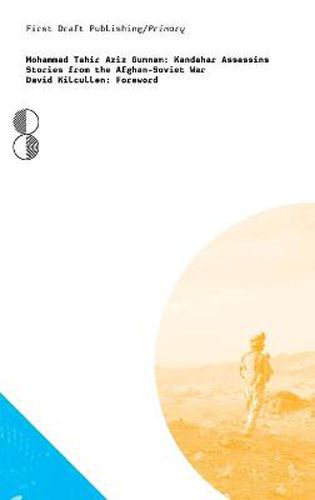Readings Newsletter
Become a Readings Member to make your shopping experience even easier.
Sign in or sign up for free!
You’re not far away from qualifying for FREE standard shipping within Australia
You’ve qualified for FREE standard shipping within Australia
The cart is loading…






This title is printed to order. This book may have been self-published. If so, we cannot guarantee the quality of the content. In the main most books will have gone through the editing process however some may not. We therefore suggest that you be aware of this before ordering this book. If in doubt check either the author or publisher’s details as we are unable to accept any returns unless they are faulty. Please contact us if you have any questions.
Assassinations are a near-daily occurrence in Afghanistan. Whether by rogue Afghan security forces or by lone individuals roaming the cities and districts, the threat of a target killing is very real. Kandahar Assassins offers an unparalleled view of this phenomenon from the perspective of the assassins. Published in 1986 in Pashto and a perennial classic in Kandahar’s bookstores, Kandahar Assassins tells the story of two well-known assassins who operated in the southern city during the 1980s war. The stories of ‘Lame Ghazi’ and Commander Ghaffari involve ambitious raids and plots carried out within the Afghan-controlled city. This book offers a corrective to the idea that assassination is a new phenomenon in Afghanistan. Mohammad Tahir Aziz Gumnam was a doctor working in Pakistan at the time, allowing him access to a variety of figures within the Afghan mujahedeen. Originally from Kandahar, Gumnam offers insight as an Afghan who was close to both the events and the people he describes. Judging from this book, the style and manner of assassinations in southern Afghanistan doesn’t appear to have changed much. Kandahar Assassins, therefore, offers a unique perspective on the world of these target killers and how they carry out their operations. It is an essential read for any soldier serving in Afghanistan as well as those seeking to understand the history behind the current conflict. Dr David Kilcullen wrote the introduction to this English translation of the book.
$9.00 standard shipping within Australia
FREE standard shipping within Australia for orders over $100.00
Express & International shipping calculated at checkout
This title is printed to order. This book may have been self-published. If so, we cannot guarantee the quality of the content. In the main most books will have gone through the editing process however some may not. We therefore suggest that you be aware of this before ordering this book. If in doubt check either the author or publisher’s details as we are unable to accept any returns unless they are faulty. Please contact us if you have any questions.
Assassinations are a near-daily occurrence in Afghanistan. Whether by rogue Afghan security forces or by lone individuals roaming the cities and districts, the threat of a target killing is very real. Kandahar Assassins offers an unparalleled view of this phenomenon from the perspective of the assassins. Published in 1986 in Pashto and a perennial classic in Kandahar’s bookstores, Kandahar Assassins tells the story of two well-known assassins who operated in the southern city during the 1980s war. The stories of ‘Lame Ghazi’ and Commander Ghaffari involve ambitious raids and plots carried out within the Afghan-controlled city. This book offers a corrective to the idea that assassination is a new phenomenon in Afghanistan. Mohammad Tahir Aziz Gumnam was a doctor working in Pakistan at the time, allowing him access to a variety of figures within the Afghan mujahedeen. Originally from Kandahar, Gumnam offers insight as an Afghan who was close to both the events and the people he describes. Judging from this book, the style and manner of assassinations in southern Afghanistan doesn’t appear to have changed much. Kandahar Assassins, therefore, offers a unique perspective on the world of these target killers and how they carry out their operations. It is an essential read for any soldier serving in Afghanistan as well as those seeking to understand the history behind the current conflict. Dr David Kilcullen wrote the introduction to this English translation of the book.